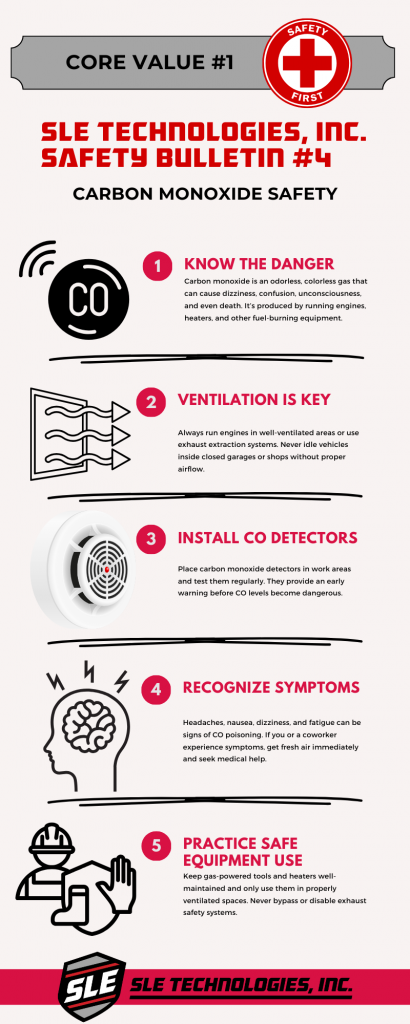In light of a tragic event in the St. Louis area, where a man and his dog died from carbon monoxide poisoning from a generator, we thought we would take a moment to cover carbon monoxide safety. The young man was using a generator because his power was out after a tornado hit the area. Our hearts are with the people throughout the Midwest who are picking up the pieces after the tornadoes and strong straight line winds that have hit the region.

According to the Centers for Disease Control and Prevention, carbon monoxide poisoning not related to fires kills 400 Americans and hospitalizes some 14,000 individuals every year.
This infographic covers safety tips for carbon monoxide in the workplace in particular. For homes, the CDC recommends installing and regularly checking CO detectors near the sleeping areas in your home, and never using portable generators indoors.
Carbon Monoxide Safety
Know the Danger – Carbon monoxide is an odorless, colorless gas that can cause dizziness, confusion, unconsciousness, and even death. It’s produced by running engines, heaters, and other fuel-burning equipment.
Ventilation is Key – Always run engines in well-ventilated areas or use exhaust extraction systems. Never idle vehicles inside closed garages or shops without proper airflow.
Install CO Detectors – Place carbon monoxide detectors in work areas and test them regularly. They provide an early warning before CO levels become dangerous.
Recognize Symptoms – Headaches, nausea, dizziness, and fatigue can be signs of CO poisoning. If you or a coworker experience symptoms, get fresh air immediately and seek medical help.
Practice Safe Equipment Use – Keep gas-powered tools and heaters well-maintained and only use them in properly ventilated spaces. Never bypass or disable exhaust safety systems.
